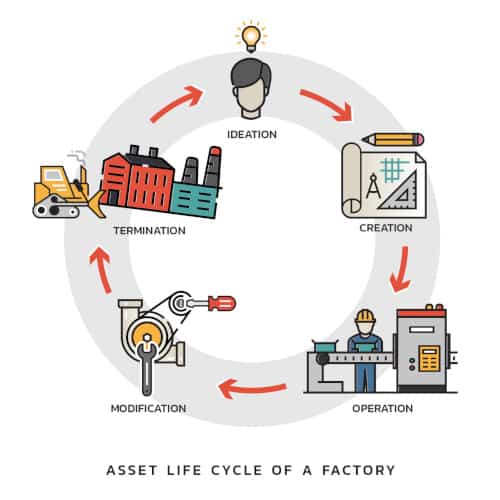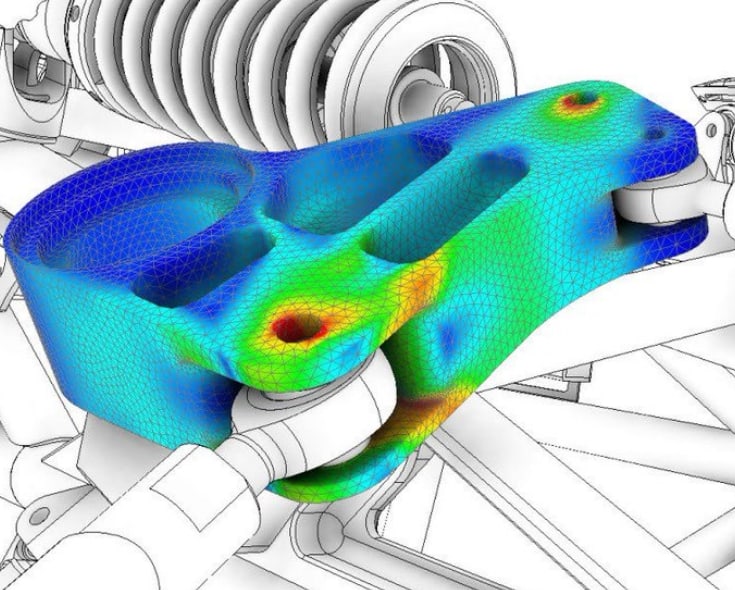Ensuring your business operations are supported and maintained is key to your bottom line, so your lifecycle management (LCM) strategy is essential. Under continuous pressure to boost your systems’ performance, adaptability, and readiness, you must also minimize your total cost of ownership.
LCM is tasked with cost effectiveness throughout your system’s life cycle. With such a clear goal, to reach it, you need data to make good business decisions.
What Is Lifecycle Management?
LCM refers to the management of data and processes used in the design, engineering, manufacturing, sales, and service of a product across the entire lifecycle.
Companies that manufacture goods experience a range of issues outside of the scope of design and manufacturing. LCM mitigates those issues and helps align and integrate key resources, quickly making product information accessible to teams across the organization.
Support Your Decisions
Solid support rests on the data you collect. When you rely on innovative analytics to capture data, you’ll have the latest and best information available.
For each major decision in your LCM strategy, you want relevant and reliable data to analyze and predict consequences. Identifying costs, resource utilization, bottlenecks, and your systems’ readiness over time are key for predicting, analyzing, and acting on what the data shows.
Your technical system design, the impact of any changes to planned operations, and your support system can all be evaluated to mitigate risk. Ultimately, you want a seamless, integrated loop of data to gather, analyze, make decisions, and implement them.
A Three-Legged Stool For Success
To reap the full benefit of LCM, you need the three legs of:
- Analytical capability. The goal is to predict the potential consequences of all alternatives at hand, such as the impact a decision could have on performance, cost, and product quality.
- Information management. To make the best decisions, you need access to valid information about your technical systems, operation, and support.
- Management strategy. Decision-makers like program managers and others must understand and recognize LCM’s key principles and its possibility and objectives. LCM should be a top consideration at all key decision points.
Each leg of the stool relies on the others for balance and stability, and data is the firm foundation on which they all rest.
A Few Process Management Lifecycle Stages
Design
Life cycle management brings digital thread capabilities to the table during the development processes allowing design, engineering, simulation, and manufacturing to work together on the same project. Using a digital thread approach, changes made during the design and engineering of a product cycle can be made simultaneously as products are being simulated or tested. The ability to make changes as a product is being designed ultimately leads to faster time-to-market, lower costs for the project and an improving product.
Engineer-to-Order
Modern PLM software uses cloud technology to manage engineers, purchasing tools, and requests related to the ETO process. Information from partners, suppliers, and customers is then used to provide a working overview of the process to improve customer response time, more accurate quotes, increased employee productivity, better product development and delivery, and customer loyalty.
Engineer to Order (ETO) is a specific use case of design in LCM. In this case, customers are highly involved in the design and requirements for a product. LCM for ETO provides a single, secure, easy-access solution for providing information for configuration management to sales, engineering, and operations for product review, design, and delivery. In addition, it includes information that can be shared not just with engineers but also with partners, suppliers, and customers.
Production
Lowering development and production costs and improving time-to-market are two of the most important results of Lean continuous manufacturing. Change management, cost management, and supply chain supplier qualification play key roles in these outcomes.
Change management delivers clarity and focuses during the inception, design, manufacturing, and product use. The change enables companies to keep customers informed and better deploy their resources.
Cost transparency is crucial for product development and quality management. It provides accuracy and cost savings that might otherwise be missed due to change management during the planning stages of a product. Cost transparency comes from change management during the planning stages of a product. Cost management gives way to early information and allows manufacturing companies to evaluate and avoid delivery or cost issues and prevent product launch hiccups.
Final Thoughts
Data is essential in any LCM strategy as it can improve your systems’ sustainability performance. Large and small firms need data to make sure they have sustainable value chain management in place. Data lets you target, organize, analyze, and manage your systems, which is the very heart of LCM.









